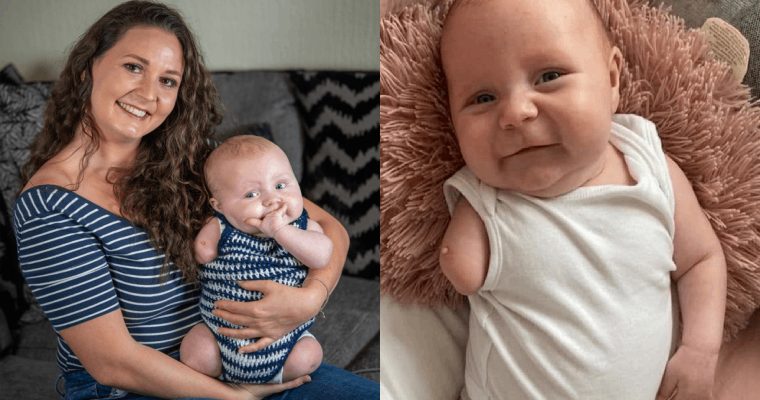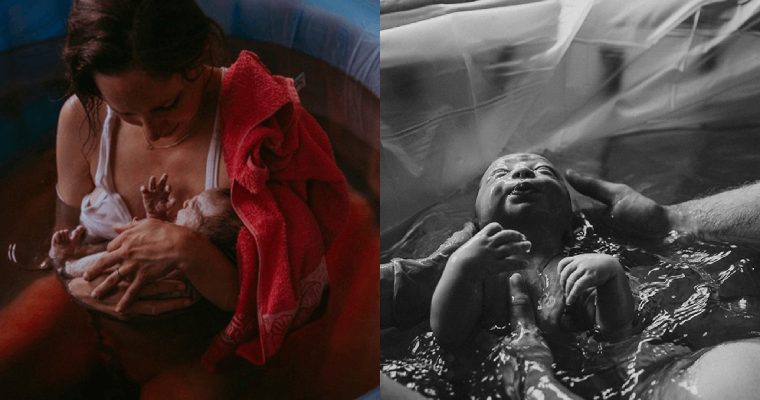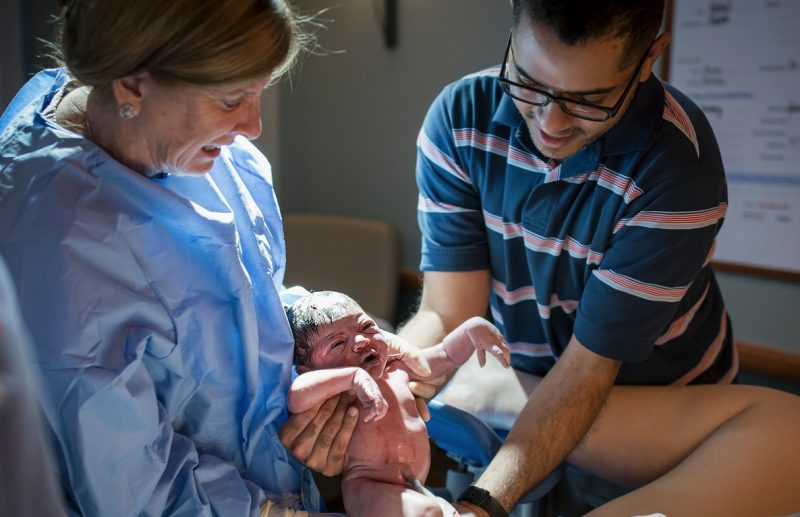Sometimes, wishes come true more abundantly than you ever could have imagined.
The Hulen family, living near Minot, North Dakota, might be a perfect example. Megan and Josh had two sons, ages 7 and 2. Josh really wanted to try for a girl, and Megan eventually agreed.
In the early morning of Sept. 2, Megan and Josh received their wish. Actually, they delivered four girls, plus a boy, at Sanford Medical Center Fargo.

In their birth order, Allison weighed 3 pounds 5.6 ounces; Adam weighed 4 pounds 0.2 ounces; Madison weighed 3 pounds 6 ounces; Emma weighed 3 pounds 10.9 ounces; and Chloe weighed 3 pounds 3.5 ounces.
Megan had dreamed of having a large family, and the addition of quintuplets certainly has made that dream come true, too.
The idea of having quintuplets required an adjustment period at first, but at 30 weeks along, a couple of weeks before their birth, she talked lightheartedly about that, along with her challenges of getting pregnant with polycystic ovary syndrome (PCOS), how her body was coping with sustaining five babies and why she felt so calm about her unusual situation.
‘We can handle anything’
Because of her PCOS, Megan typically doesn’t ovulate on her own. With the Hulens’ first son, she had achieved pregnancy by taking an oral infertility medication.
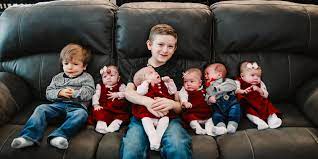
That didn’t work when they wanted to have a second child, so he was the result of fertility treatment injections to stimulate her ovaries to produce eggs and an injection to stimulate ovulation, followed by intrauterine insemination.
At the 20-week anatomy scan during Megan’s pregnancy with Matthew, the couple received a shock. Their baby boy had some serious medical complications. He would be born with a rare genetic disorder called Nager syndrome that affects development of the face, hands and arms. After Matthew was born, he spent four months in the neonatal intensive care unit (NICU). He needed a tracheostomy, a feeding tube and requires significant medical care.
“But other than that, he is a crazy, bouncy 2-year-old,” said Megan, a stay-at-home mom.
“I think there for a while, it was like, OK, we have Matthew and this is a lot to take in. And then it became our norm at home. My husband was still saying, ‘We really need a girl.’”
The Hulens thought, “If we can handle Matthew and we’ve come this far with him, we can handle anything.”
That’s when fate laughed and stepped in.
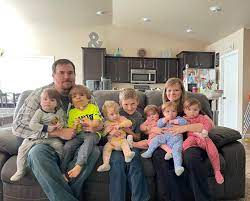
This time around, things went differently
The plan was for Megan to undergo the same fertility treatment that had helped bring about Matthew. She took her injections to stimulate follicles, each containing an egg, to grow. This time, the injections worked too well — there were too many follicles, the clinicians observed at her ultrasound. So they advised her to quit taking the medication and come back in a week to see if any of the follicles had developed enough on their own to continue with the ovulation-stimulating injection (hCG).
At that next ultrasound, there were still too many follicles growing, so they canceled the cycle and didn’t go through with the hCG injection, intending to try again on Megan’s next cycle.
Megan was advised to take a pregnancy test in two weeks before starting the new cycle. A couple of days before the end of two weeks, she said, “I started feeling funny.” Her pregnancy test was positive.
Evidently, Megan had ovulated on her own, either the day of her ultrasound or the next day. And while the couple, as advised, avoided relations after that ultrasound, they hadn’t just before it.
Hence, the true shock when they went in for her first pregnancy ultrasound at six weeks and discovered five embryos.
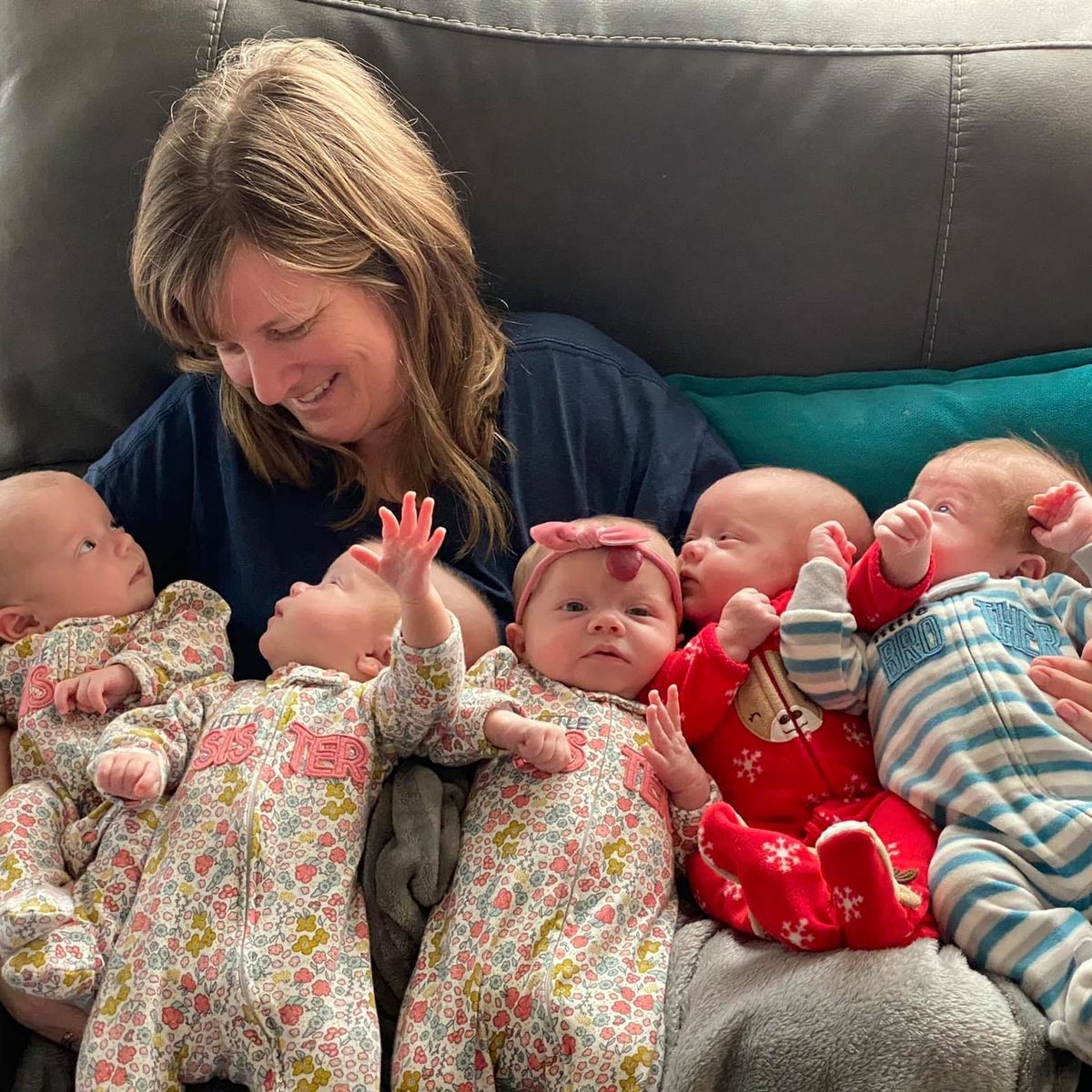
Time to freak out
“I … freaked out and had my moment of panic,” Megan said. “I had been in the NICU with Matthew. So I’d seen all different stories, all different kinds. And I told my husband, ‘… I’ve got to have my own little time to freak out before you take me home.’”
She ended up crying for an hour in the corner of his office. “We did not plan this. This is too many. What are we going to do?” she asked Josh, a roadmaster for BNSF Railway Co.
Josh reassured her, keeping in mind that only one heartbeat had been heard so far, and they were told that with higher-order multiples, sometimes one or a few tend to vanish. In a week, they would find out how many embryos were actually viable.
“He was excited and keeping it together for me,” Megan said.
A week later, when five heartbeats were detected, they both took a moment to freak out.
The first trimester was challenging in several ways. Megan experienced constant and extreme nausea. Riding in a car or turning over in bed made her feel awful.
“I’ve never really experienced that kind of sickness,” she said, “but they say it’s really common with the multiples, having increased hormones. It makes symptoms a lot more severe.”
The Hulens knew, too, that it’s not uncommon to lose a baby or two in that first trimester. Because of that and their history with miscarriage, they kept the quintuplets a “gigantic secret.”
Then at 12 weeks, Megan’s nausea went away and they still had five babies growing. They finally shared the news with their families in their native Missouri over Zoom — greeted first with stunned, skeptical silence, then an excited explosion of questions.
Keeping calm
Megan learned a crucial lesson after spending time with Matthew in the NICU that sustains her today. “I always had myself in an uproar about it, and it didn’t do me any good,” she said of those difficult months.
“So I thought, when it comes to this, I need to understand it’s nothing I can control. I just need to do what the doctors tell me and take it a day at a time and try not to freak out all the time,” Megan said. “It’s helped me keep my calm, which has been great.”
Incredibly, Megan compares her pregnancy with quintuplets, after the first trimester, to being pretty similar to singleton pregnancies. “I’ve been really surprised that it’s going so well,” she said.
Nevertheless, she was vigilant for any signs of preterm labor, which is a higher risk in any multiple pregnancy. Thankfully, a scare at 18 or 19 weeks, when her stomach dropped overnight, was just a scare, and the babies were fine. Making it to 24 weeks, considered the age of viability, was key. “That gave me even more peace,” Megan said.
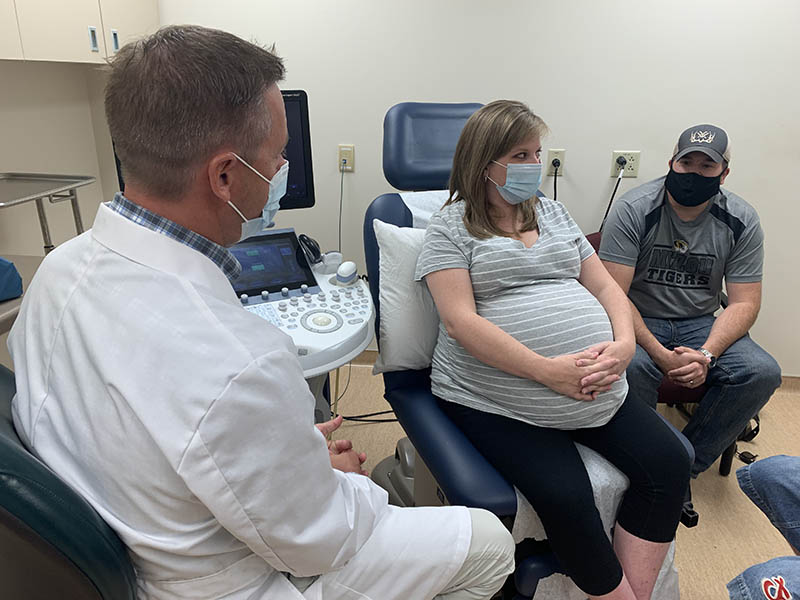
Her abdomen was a playground
Of course, Megan felt far more movement with quintuplets than with her other two boys. “They’re never on the same schedule. Both my boys were always active at night. … These, it’s like, oh, one or two’s moving during the day, and one’s during the evening, and, oh, three or four of them are playing at night.”
Plus, Megan said, the boy and one of the girls were perched right on her bladder all the time.
So the 5-foot-1 woman was not exactly comfortable. She had been sleeping well until quite recently, though, when she resorted to sleeping on the couch to get more support. She needed pillows to prop up her stomach. “I get an hour, two at the most, and then I wake up and it’s time to move,” Megan said.
“But really, definitely not the worst I think I could experience,” she added.
Bismarck care team
Megan started out seeing Dr. Ana Tobiasz, a Sanford Health specialist in maternal-fetal medicine based in Bismarck, two hours from home.
“I was so, so nervous about this, in the very beginning, just thinking I’m not from around here, and I don’t know a lot about being pregnant with multiples,” Megan said.
Meeting Dr. Tobiasz reassured her. “I loved her right off the bat, and her whole team is amazing. All of the nurses and the ultrasound techs are really, really sweet and always made me feel taken care of.”
Megan’s Sanford Health care team originally expected her to stay in Bismarck starting at week 24 and deliver her quintuplets at Sanford Medical Center – Bismarck. The hospital completed its NICU expansion just this summer, adding space and private rooms. However, to be certain the quintuplets would have the best care possible if they were born very early, Megan’s care team decided Sanford Medical Center Fargo had more space and staff during the COVID-19 era to accommodate five tiny babies all at once.
Despite a little trepidation about delivering four hours away from home and meeting a whole new care team, “I felt like they were really doing what was best for us, which was wonderful,” Megan said.
Transition to Fargo
“It was kind of crazy to go to a completely new doctor that I had never met before in the middle of the game,” Megan said. But it turned out she felt the same way meeting Dr. Timothy Beiswenger, also a Sanford Health maternal-fetal medicine specialist, as she did about meeting Dr. Tobiasz.
“I just completely was in love with the team from the get-go,” Megan said. “And Dr. Beiswenger has been nothing short of amazing and has kept the closest eye on me. And he’s very personable. You can tell that you’re not just a patient to him. He truly cares.”
Because the two hospitals are both part of the Sanford Health network, the transition from Bismarck to Fargo happened quite seamlessly. Megan’s electronic medical records are visible to both locations, and maternal-fetal medicine has made an effort to standardize processes at its locations in Bismarck, Fargo and Sioux Falls, South Dakota.
Also, every month, Dr. Beiswenger said, a multidiscipline fetal care meeting in Fargo joins maternal-fetal medicine specialists, neonatologists and pediatric subspecialists who talk about patients. The team also adds in Dr. Tobiasz from Bismarck.
The higher-order multiple moms generally meet with neonatology in advance to help outline a plan of care. In the quintuplets’ case, that included five separate NICU teams of three, one for each baby.
When Megan visited with the NICU in Fargo, she said, “we were very comforted that we found out they already had a plan completely put together for the babies before we even arrived.”
She still keeps in touch with her Bismarck team, too. “It feels like one big family,” she said.
Doing unusually well
Megan, who had been staying at the Ronald McDonald House in Fargo, delivered on schedule Sept. 2 at 32 weeks. That’s good timing for the quintuplets when taking into account the balance between risks to the babies earlier than that and risks to the babies and mother later than that, Dr. Beiswenger said.
With all of the babies weighing over 3 pounds, Dr. Beiswenger expected them to do well after they were born. “They’re growing very well. And even on a singleton growth curve, they’re growing above average,” he said a week and a half before their birth.
Usually, one or more babies in higher-order multiples would have growth restriction and be very small compared to the others. Doctors then are forced to weigh risks in timing of the delivery. “Thankfully, this time we haven’t had to make those decisions,” Dr. Beiswenger said.
Dr. Beiswenger was also pleased with how well Megan herself did. Higher-order multiples can lead to much higher risks of gestational hypertension, gestational diabetes or preeclampsia. Megan didn’t have to be hospitalized for maternal or fetal complications, which was unusual. Typically, he said, “either they develop preterm labor or hypertension or growth restriction. They don’t just come in for a scheduled delivery.”
‘She has such a positive attitude’
Dr. Beiswenger started seeing Megan weekly at 24 weeks and eventually twice a week. He didn’t expect to still be seeing her in his office at 31 weeks — quintuplets deliver at 28 or 29 weeks on average, he said. But he appreciates the bond he developed in that time with Megan and Josh — “a wonderful couple.”
“We’re so thankful that she’s done as well as she has,” Dr. Beiswenger said.
He praises her ability to take her pregnancy with quintuplets in stride. “She has such a positive attitude, and even though she can’t get up from sitting down, and she needs help to move around, she just doesn’t complain,” he said. “I think if I was carrying around five babies at this gestation, I’d be complaining a lot more than she is. … But she seems so thankful that she’s done so well and she knows the end is in sight.”
Of course, the end of the pregnancy is just the beginning of a whole new journey. How do you plan for bringing home five babies? Megan said that part really started to become real once they learned the delivery date. “I’ve been focused for so long on trying to keep these babies in and wasn’t focused on how this is going to be when they’re out,” she said.
Getting ready
Megan and Josh do have some things ready for when their babies leave the NICU: five car seats, two triplet strollers, five beds and an idea for color-coding the babies to help keep track of feedings, weight gains, etc. They’ll rely on friends and teenagers they know to help meet the quintuplets’ cuddling needs.
Right now, they plan to do it all in their current three-bedroom house, but Megan predicts they’ll be looking for a bigger house in a couple of years.
And the quintuplets’ older brothers?
“Our 7-year-old is over-the-moon excited,” Megan said.
The 2-year-old, and current baby of the family, might have other thoughts. “He’s not really sure what’s coming his way,” she said. “He knows something’s different, but he’s like, I don’t really know what’s up. I think eventually he will adjust, but I think we might deal with quite a bit of jealousy from the little one for a while.”
Remembering the people
When Megan looks back on this time in her life — if she has time to reflect, that is — she thinks she’ll remember the people the most.
“I have met so many incredible people and so many nice people,” she said.
“The people here with the hospital and the people here at Ronald McDonald and just the people that I’ve even met through our story have been incredible. … People have been unbelievably kind and generous and supportive.”
No doubt, there’s more of that to come now that she’s finally surrounded by the five babies she has been nurturing inside.


